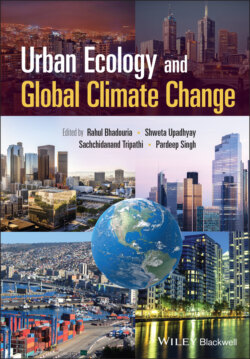Читать книгу Urban Ecology and Global Climate Change - Группа авторов - Страница 33
1.5.3.4 Urban Water Bodies
ОглавлениеMost of the urbanisations have taken place at or around the bank of rivers/streams or water bodies, globally. Most of the water bodies flowing/situating along/around the cities have been overexploited and suffering from challenges like high pollution load, improper planning, and management to the extreme events (e.g. floods), etc. (Verma et al. 2020b). Similarly, most of the cities are characterised by receding groundwater levels and high water tables due to imbalances in the utilisation and recharge of water from the aquifers (de Graaf et al. 2019). However, the role of water bodies in mitigating the impact of climate change and improving urban health cannot be ignored or compromised. The hydrological cycle of the urban ecosystems determines the overall habitat and vegetation composition (Verma et al. 2020b). The water bodies act as urban cooling island (UCI) which played considerable role in mitigating UHI effect (Yu et al. 2017; Yang et al. 2020). For example, water bodies having square or circular shapes are more effective in providing the UCI effect as compared to water bodies with irregular or complicated shapes (Du et al. 2016). Thus, there is an urgent need to develop and design policies for urban water body management. This can be done by using a watershed management approach which will help in developing the water bodies along with their surrounding areas (and vegetation) by applying several modern tools like the use of remote sensing and GIS techniques (Ren et al. 2017).
